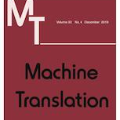Machine Translation Quality Estimation (QE) is a task of predicting the quality of machine translations without relying on any reference. Recently, the predictor-estimator framework trains the predictor as a feature extractor, which leverages the extra parallel corpora without QE labels, achieving promising QE performance. However, we argue that there are gaps between the predictor and the estimator in both data quality and training objectives, which preclude QE models from benefiting from a large number of parallel corpora more directly. We propose a novel framework called DirectQE that provides a direct pretraining for QE tasks. In DirectQE, a generator is trained to produce pseudo data that is closer to the real QE data, and a detector is pretrained on these data with novel objectives that are akin to the QE task. Experiments on widely used benchmarks show that DirectQE outperforms existing methods, without using any pretraining models such as BERT. We also give extensive analyses showing how fixing the two gaps contributes to our improvements.
翻译:机器翻译质量估计(QE)是一项不依靠任何参考就预测机器翻译质量的任务。 最近,预测器估计器框架将预测器培训成一个特性提取器,利用额外的平行公司而不贴上QE标签,从而实现有希望的QE性能绩效。然而,我们争辩说,预测器和估计器在数据质量和培训目标两方面都存在差距,这使得量化标准模型无法更直接地受益于大量平行公司。我们提议了一个称为直接QE的新颖框架,为量化标准任务提供直接的预培训。在DirectQE中,一个生成器受过培训,能够产生更接近真正的量化标准数据的伪数据,而一个检测器则事先接受过与量化标准任务相似的新数据的培训。关于广泛使用的基准的实验表明,在不使用任何诸如BERT等预培训模型的情况下, " 直接量化标准 " 超越了现有方法。我们还进行了广泛的分析,表明如何弥补这两个差距有助于我们的改进。




